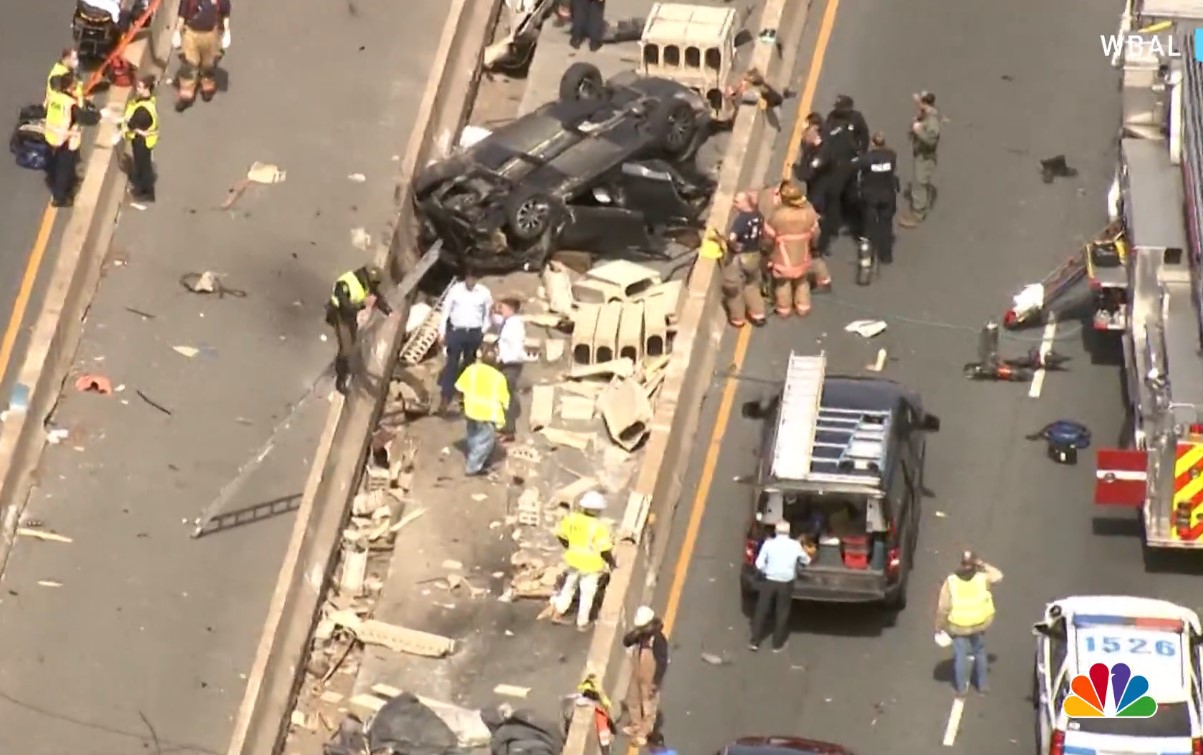Thirteen workers were killed in two workplace catastrophes last week. Six workers were killed in a highway work zone near Baltimore on Wednesday, and two days later 7 died when the R.M. Palmer chocolate factory in West Reading, Pennsylvania exploded.
To a certain extent, there’s nothing new to see here. On average, one hundred workers die every week in the United States due to traumatic injuries suffered at work. More than 20 times as many die from occupational diseases, many due to exposure to hazardous substances many years before they died.
But last week’s deaths gained much more national media attention than the normal carnage in the workplace. As avid readers of The Weekly Toll know, workers generally die one at a time. Sometimes there’s a news story, occasionally there is a preliminary summary of what happened, and often the name of the dead worker isn’t even included. Then they’re forgotten, except by their family, friends and co-workers until, sometimes, six months later, there’s an OSHA citation.
But for public employees in 23 states and many other fatalities in workplaces that are not under OSHA’s jurisdiction, there’s not even an investigation.
Bringing some recognition to these forgotten workers is the reason I publish The Weekly Toll.
Only when more than one worker is killed in one incident — and preferably several in a visually exciting way — does the national media pay attention. And sometimes they even call for change.
We know the names of the Maryland construction workers: Rolando Ruiz, 46, of Laurel, Maryland; Carlos Orlando Villatoro Escobar, 43, of Frederick; Jose Armando Escobar, 52, of Frederick; Mahlon Simmons III, 31, of Union Bridge; Mahlon Simmons II, 52, of Union Bridge; and Sybil Lee DiMaggio, 46, of Glen Burnie.
So far, we only know two of the seven West Reading names: Amy Sandoe, 49, of Ephrata, Pennsylvania and Domingo Cruz, 60, of Reading.
One hundred workers die every week in the United States due to traumatic injuries suffered at work. But this week’s deaths gained much more media attention than the normal carnage in the workplace.
What Happened?
We don’t yet know the real cause of either incident. The highway construction workers were mostly protected by Jersey Barriers, but there was a gap where the speeding, out-of-control car slipped through. Some highway workers told the press that hey were always terrified working at that site. The NTSB is investigating.
Again, aside from the number of workers killed in a single incident, there is nothing new here. Hardly a week ever goes by when at least one highway construction worker isn’t killed on the job.
Likewise, we don’t yet know the cause of the R.M. Palmer chocolate factory explosion. Some workers reported smelling gas, although the gas company never received a complaint. Chocolate factories are also known to be at high risk for combustible dust explosions. Or it could also have been both gas and combustible dust. A small gas explosion, for example, could have entrained enough combustible chocolate or sugar dust in the air to cause a massive secondary explosion. OSHA, the NTSB and the Chemical Safety Board are investigating.
The last major combustible dust explosion in this country was on February 7, 2008 when 14 workers died in an explosion at the Imperial Sugar factory in Port Wentworth, Georgia. In 2006, The Chemical Safety Board released a major report on combustible dust, calling for an OSHA standard. During the Obama administration, OSHA put resources into developing a combustible dust standard but it fell victim to cost-benefit analysis. When you’re trying to regulate a low frequency/high impact hazard like combustible dust explosions, the financial benefits rarely outweigh the costs. They don’t happen that often, but when they do, they’re huge…and deadly. The Trump administration finally killed the standard.
The Deadly Last Week of March
For some reason, the last week of March has always been a bad week in workplace safety.
On March 23, 2005, an explosion at the BP refinery in Texas City, Texas, killed 15 workers. There were no deaths when the Exxon Valdez ran aground in Prince William Sound, Alaska on March 24, 1989, but it was the second largest environmental disaster in U.S. waters, after the 2010 Deepwater Horizon oil spill. Many of the cleanup workers got sick because they weren’t adequate trained or equipped to clean up the oil spill. 146 people, including 123 women, burned to death or died jumping from the upper floors of the Triangle Shirtwaist building on March 25, 1911. On March 26, 1942, 20 tons of dynamite exploded prematurely at the Lehigh Portland Cement Co.’s Sandts Eddy quarry in Lower Mount Bethel Township, Pennsylvania, killing 31 workers. And on March 27, 1980, the Alexander L. Kielland, a semi-submersible platform accommodating the workers of the bridge-linked Edda oil rig in the Ekofisk field off the coast of Scotland, capsized, killing 123 people.
Last week’s catastrophes fit right in. The main difference, this being 2023, is that both were captured on video. If you’re interested and have the stomach, you can view the highway incident here:
And the chocolate factory video here.
